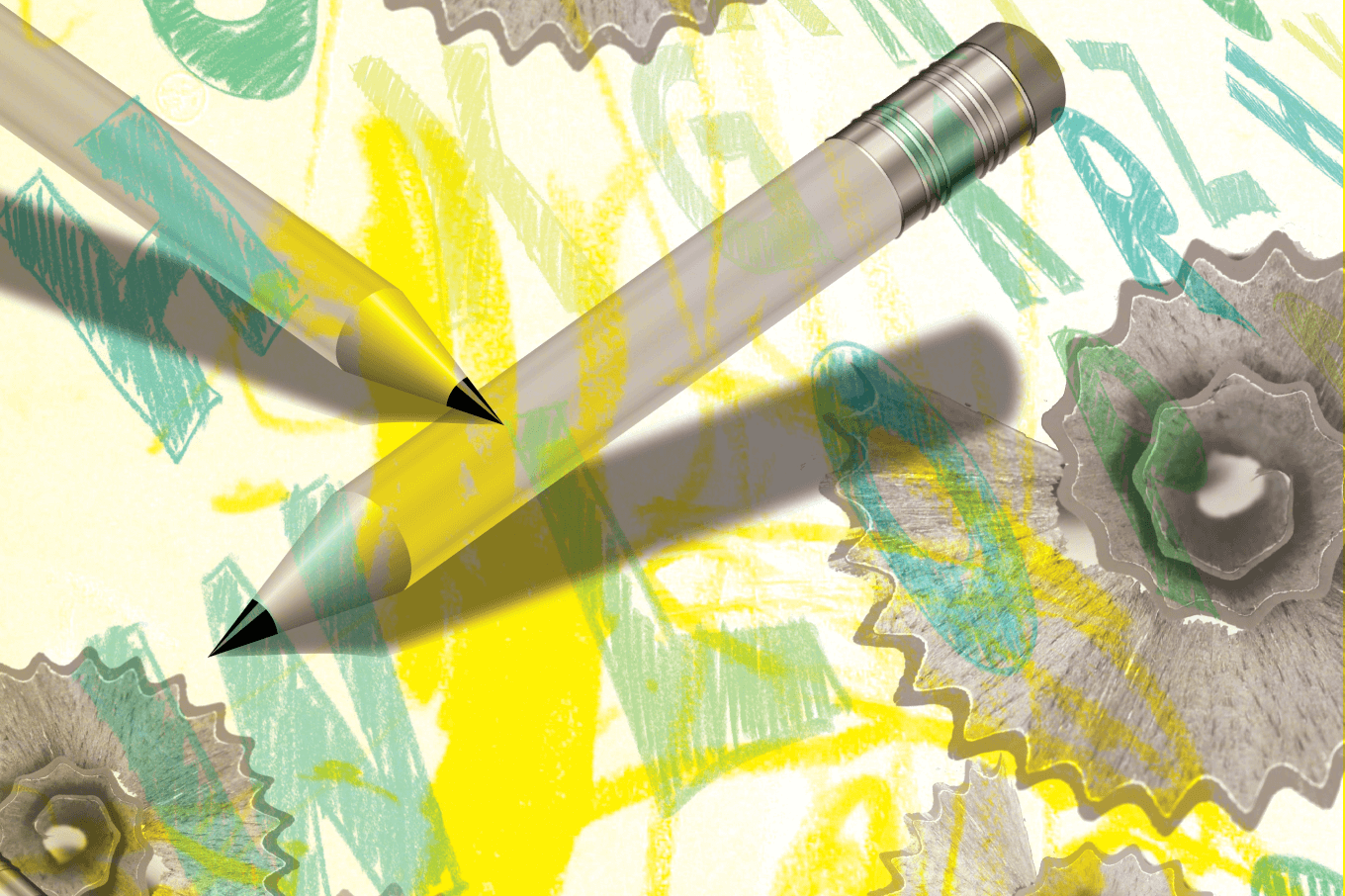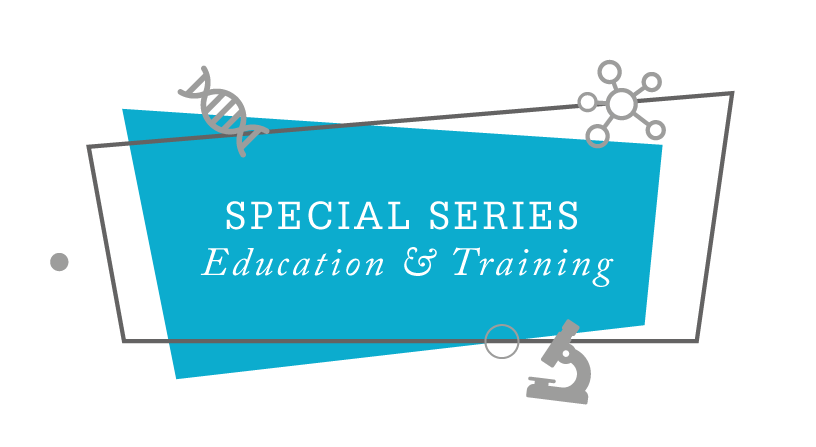
Pathologists are often entrusted with medical education; it is our opportunity to share our discipline with doctors of all stripes. How can we keep our teaching exciting, challenging, and relevant, so that the value of the laboratory is evident to every student?
Many pathologists participate in undergraduate medical education. It’s an honor to make a new generation of doctors aware of pathology and its value to every medical discipline – but with that honor comes the responsibility to give our students what they need to succeed.
Regardless of where, how, and whom medical educators teach, we all need simple techniques that can make learning exciting and effective for our students. Most of the techniques we offer here can be accomplished without additional human or financial resources – just a change in the mindset of the educators. Over the past two decades, these steps have helped us successfully teach up to 900 medical students at a time, with successful performances on the USMLE step 1 examination. (For those who are not familiar, the exam questions are about 70 percent pathology-related and almost all are clinical vignette-based analysis and problem-solving.)
How did we manage it with just two full-time professors and a group of clinical tutors? We’ve come up with a few simple innovations that we hope will help other pathology faculty draw students into the discipline.
Distinguishing teaching from learning
Just because an educator teaches something doesn’t mean the student learns it! True learning is a product of the teacher’s knowledge base, the skill they use to transfer that knowledge, and the learning environment. To enhance the student’s learning, ask yourself:
What do you expect the student to learn and how will you make those objectives explicit?
What methods and environments will you use to help the student learn?
How will you assess the student’s learning?
Oversight bodies, such as medical councils, state education departments, and accreditation bodies, usually have a curriculum that documents overall learning outcomes (knowledge, skills, and professional behaviors). The “knowledge” segment includes contents or topics (for example, cardiovascular system), level of competence at a given stage (for example, year one), and discipline (for example, pathology). The “skills” component includes two broad categories: communication skills (how to take history, interact with medical team members, convey bad news, and so on) and clinical skills (physical examinations, basic medical procedures…). The professional behavior component includes a wide range of behaviors from punctuality to empathy.

Pathology mainly deals with the hows and whys of illness and injury, their consequences in various organs and tissues, their effects on the patient, and the laboratory evaluations that confirm diagnoses, assess damage, monitor for complications, and generate predictions and prognoses. If we link this knowledge to clinical skills, a strong causal relationship emerges. A good clinician, in taking a patient’s history, asks relevant questions and bases the physical examination on the responses. Such clinical reasoning can only arise from a solid understanding of pathology – but, unfortunately, many pathology teachers simply regurgitate information from textbooks. Students might learn the course of disease, the morphologic changes in the affected tissues, or how to make a diagnosis from a gross specimen, biopsy slide, or blood or bone marrow smear. But what they often miss is pathology’s impact on clinical reasoning, which is key to their future careers in medicine.
Many treat pathology as a “necessary evil” to overcome on their way to graduation. But if the discipline is taught as the essential basis of all medicine, it becomes meaningful and exciting – and that appeal creates medical graduates who think logically and scientifically when diagnosing and managing their patients. No longer do students memorize pathology facts simply to pass the exam; instead, they apply that knowledge throughout their careers to improve patient care. Furthermore, clinical departments can then use the limited interactive time with patients to teach and assess history-taking, physical examination, and procedural skills – tasks for which pathology has prepared them well.
But does this mean that the responsibility to teach clinical reasoning lies entirely at the feet of pathologists? Is there enough curriculum time to achieve this? How can we cover the entirety of pathology and teach medicine as well? Do we really need to teach everything in the lectures or can we discuss key concepts and have students learn the rest by self-directed study?
A fresh approach
We often model our teaching style on the way we ourselves were taught – but our students live in a different world. We no longer need to transfer the textbook into our students’ brains; they excel at information-gathering – but often “learn to the exam” instead of acquiring the competencies to be a good doctor. The trick is to teach pathology as the basis of all disease (and therefore relevant to all areas of medicine), rather than to act as if we expect every medical student to become a pathologist. Teaching them to read a slide and make a diagnosis serves no purpose if they cannot also correlate the altered morphology with the patient’s signs and symptoms.
We realized the error of our teaching ways when, a few decades ago, a student called us to his computer to show off his seven-year-old son’s abilities. Every image he flashed on the screen, his son recalled from memory: liver carcinoma, leukemia, pneumonia. It occurred to us that, if the boy had taken the practical exam as it was conducted those days, his score would have been excellent. If a seven-year-old could outscore them, was our pathology course adequately preparing tomorrow’s doctors for a career in medicine?
When we teach a topic – for example, pneumonia – we have a set of expectations for students: list the causes of pneumonia, common age groups affected, common locations in the lung, signs and symptoms, appearance on X-ray, potential complications, causes of death… But much of this information is easily found in textbooks – so why should students come to lectures at all? Is it not easier and faster to learn the material at home? Even if textbooks are “information overload,” could we not accomplish the same goals by providing a handout or summary for students to review? Even images and videos are now easily shared online.
There are two ways to address this teaching dilemma. One is to set our expectations higher. These students are preparing to become doctors; we should expect more than simple memorization. Instead of “list,” “identify,” or “discuss” – why not “analyze,” “distinguish,” “interpret,” “solve?” By challenging our students, we remove the artificial limitations of traditional education – and they become not just well-educated doctors, but good ones.
A Sample Learning Objective for Renal Pathology
Compare and contrast the: 1) relative frequency; 2) etiology and pathogenesis; 3) clinical presentation, course, and prognosis; 4) laboratory findings; and 5) light, immunofluorescent, and electron microscopic appearances of the following glomerular diseases:
minimal change disease
membranous glomerulonephritis
focal segmental glomerulonephritis
membranoproliferative glomerulonephritis
diabetic glomerulosclerosis
amyloidosis
acute proliferative glomerulonephritis
rapidly progressive glomerulonephritis
(e.g., Goodpasture syndrome, granulomatosis with polyangiitis)IgA nephropathy (Berger’s disease)
Alport syndrome
Focusing on interaction
Once we set clear expectations, students can learn a lot by themselves. We can optimize our time in the classroom by focusing on one or two meaningful, interactive experiences instead of rushing through several less valuable ones. In a way, it’s like cooking rice; when the grains are boiling, we only need to check a spoonful to know that the whole pot of rice is cooked. So how can we make our lectures as good as possible?
Start with a clinical story that directly reflects the learning objective (“how,” “why,” and “so what”). Use questions about the patient story to encourage students to reflect on the clinical reasoning.
Make the lecture session interactive. Monologues are boring – and a student’s attention span for a speech lasts less than 10 minutes.
The natural way to make a lecture session interactive is to ask questions – but this has major downsides. Students may fear answering incorrectly in front of the class. Intimidation reduces enjoyment and can even hinder learning to the point where students avoid attending classes. Individual answers may misrepresent the achievements of the class as a whole – so teachers may either waste time explaining concepts most students already understand or fail to explain concepts they don’t. Finally, open-ended questions can elicit irrelevant, tangential, or unnecessarily long answers that take away from limited lecture time.
We have found clinical vignette-based multiple-choice questions a useful part of lectures. The first, at the start of the lecture, has concepts related to previous lectures or courses. This is followed by a patient story slide with pertinent details that create further opportunities for questions. In our lectures, students respond anonymously using “clickers,” but others may prefer smartphone polling; both options are easy, inexpensive, and allow responses to be displayed immediately. Misunderstandings and confusion show up quickly and can be addressed with similar efficiency – and without the need to put individual students on the spot. Some software even allows responses to be linked to individual students, simplifying assessment of attendance and understanding. Better yet, if the students are actively involved in the lecture, their enjoyment will increase and some may even be tempted to pursue pathology as a career when they realize its relevance to all clinical practice.

That said, it’s important to ask relevant questions that make students think and engage. If the questions are easy or uninteresting, students may resort to “shortcuts” like answering at random or giving their clickers to friends rather than attending in person. To keep students active, we generally allot 75 seconds per question, then immediately provide the reasoning behind the correct answer (and dispel any misunderstandings over incorrect ones).
Flipping the narrative
Many of us are under the mistaken impression that students learn because we teach them. In fact, it’s amazing how much they learn on their own. Many institutions want their graduates to be independent, and lifelong learners – but how can you teach someone to learn? We use the “flipped classroom” concept in which we provide students with self-directed learning material (such as readings, assignments, and objectives) ahead of time and then review them in the classroom.
To supplement our flipped classroom, we provide laboratory and small-group sessions. At the moment, most lab sessions ask students to diagnose a set of glass slides of biopsies, autopsies, blood smears, and bone marrow aspirates. Some even ask the students to draw color diagrams of the slides and label the components. Because the exams take the same format, many students pass them not by analyzing morphologic features under the microscope, but by recognizing the appearance of slides they have memorized throughout the year. Students learn to attach labels to slides – but not to assess the scientific reasoning behind the diagnosis, let alone to correlate the morphologic features with their meaning for the patient. But if the teacher treats the slide or image as representative of a whole patient, the learning takes on another dimension. Students ask questions like, “What caused the morphologic changes? How do they produce symptoms? What physical signs should we look for? Which tests should we order – and which can be forgone?”
Although students are encouraged to lead their learning, sessions must be properly monitored to maintain enthusiasm and clarify any misunderstandings. Our department consists of just one part-time and two full-time pathology professors, so we run an international clinical tutor fellowship program that recruits recent medical graduates from across the globe to assist. Larger departments may invite their residents to perform the same function, exercising their clinical reasoning skills and helping them develop as teachers and as pathologists.
Every day, we prepare teaching material and train the clinical tutors for lab sessions. The tutors attend pathology lectures alongside the students, then act as preceptors for groups of eight to ten students in the lab. One thing we and our tutors have in common is that we don’t give students direct answers. Each question is like the tip of an iceberg; it hints at a gap in the deeper foundation of understanding. To close that gap, we guide students toward the correct answer by asking them smaller questions, referring them to resources for information, and sometimes involving the rest of their lab group. A given answer may be quickly forgotten – but an earned answer will stay with the student for life.

Every pathologist is a doctor…
… but not all doctors are pathologists, and the onus is on us to ensure that we teach the value of pathology to every future medical professional.
And that means staying up to date; it’s frustrating to see lab procedures that went extinct decades ago still taught and tested in medical schools because no one has reviewed their current context. And it means staying relevant; for instance, lab sessions that discuss hematology and clinical chemistry provide better mileage to students if results are given as data in a clinical context and we cover the “how,” “why,” and “so what.” It means paying close attention to what matters; do future pediatricians and rheumatologists need to know how to operate a flow cytometer, or is it more important for them to understand how to collect, store, and transport samples?
We also need to optimize our testing to make sure it serves our students’ best interests. Essay questions, for instance, can objectively probe clinical reasoning. There is no formal limit to the length of the question itself – so why not use it to gauge the way students analyze and interpret data?
Getting Value Out of Essay Questions
Instead of: “Write what you know about myocardial infarction.”
Try providing a clinical vignette: “A 55-year-old male presents with sudden-onset chest pain radiating to the left arm, accompanied by profuse sweating. EKG shows ST elevation and T wave inversion. Pulse is rapid and thready. The pain has lasted for eight hours.” If needed, add further directions for a comprehensive response. “Why did the pain radiate to the left arm? Which coronary artery is most likely to be affected? What is the type of pathology in the coronary artery? Why was the pulse weak and rapid? What biochemical tests at this stage will provide the best diagnostic help? What histological changes would occur in the damaged segment of the myocardium?”
Multiple-choice questions can be used in formative and summative evaluations if permitted by the institutional guidelines – but we must take care to ensure that they are clinical vignette-based and test higher cognitive skills like analysis, interpretation, and problem-solving.
We teachers are no longer the sole source of information for our students. But if that’s no longer our role, then what is? Perhaps our responsibility lies in designing better learning objectives and pushing our students to succeed. When every doctor can look at a patient and see not only a possible diagnosis, but also the clinical reasoning behind it, the tests that must be run, and the problems that must be solved, that is when we as pathology educators will be fully achieving our goals.





